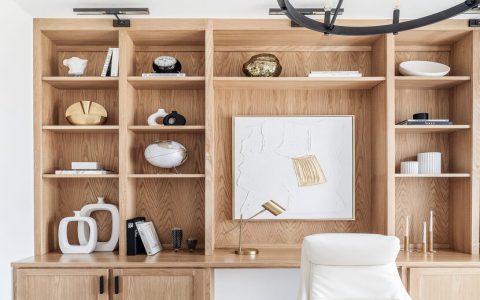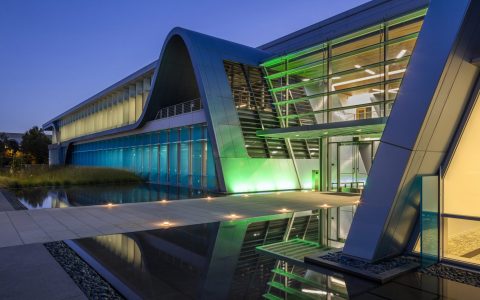Effective bookstore interior design is crucial for creating an inviting atmosphere that encourages browsing, discovery, and ultimately, sales. It balances aesthetic appeal with functional efficiency to enhance the customer experience.
Core Principles of Bookstore Interior Design
The primary goal is to craft a space that not only showcases books effectively but also fosters a sense of community and a love for reading. Key considerations include customer flow, product visibility, and overall ambiance.
Key Design Elements and Strategies
- Layout and Circulation:

-
Clear Pathways: Ensure aisles are sufficiently wide (at least 36-48 inches) for comfortable navigation, accommodating multiple customers and accessibility needs. Avoid dead-end aisles to promote exploration.
-
Logical Flow: Design the layout to guide customers intuitively. Position high-interest sections like new releases and bestsellers near the entrance. Group related genres together to facilitate discovery.
-
Zoning: Create distinct zones for different categories (e.g., fiction, non-fiction, children's, periodicals) and functions (e.g., quiet reading nooks, event space, café area if applicable). The children's section should be engaging, safe, and potentially feature lower shelving and interactive elements.
-
- Shelving and Display:
-
Variety and Flexibility: Utilize a mix of standard spine-out shelving, face-out displays to highlight covers, and thematic display tables or gondolas. Modular shelving systems allow for easy reconfiguration.

-
Optimal Height and Depth: Shelves should generally not exceed a height that is comfortable for an average adult to reach. Ensure shelf depth accommodates various book sizes without excessive overhang.
-
Visual Merchandising: Employ strategies like grouping books by theme, author promotions, or staff picks. Use props sparingly to create visual interest without clutter. Ensure displays are well-maintained and regularly refreshed.
-
- Lighting:
-
Ambient Lighting: Provide good overall illumination to create a welcoming environment. Maximize natural light where possible, supplemented by well-distributed artificial light (e.g., recessed downlights, track lighting).
-
Task Lighting: Crucial for readability. Integrate lighting within or directed at bookshelves (e.g., LED strips, spotlights) to ensure book spines and covers are clearly visible.

-
Accent Lighting: Use to highlight specific displays, artwork, or architectural features, adding depth and focus to the space.
-
- Atmosphere and Comfort:
-
Seating Areas: Incorporate comfortable seating options – such as armchairs, benches, or small tables with chairs – to encourage customers to linger, read, and contemplate purchases.
-
Color Palette and Materials: Choose a color scheme that reflects the desired mood. Warm, neutral tones often create a cozy and inviting atmosphere. Natural materials like wood for shelving and flooring can add warmth and texture. Consider durability and ease of maintenance for all finishes.
-
Acoustics: Manage sound levels to ensure a pleasant browsing experience. Use sound-absorbing materials like rugs, upholstered furniture, or acoustic panels if necessary, especially in larger spaces or areas designated for quiet reading.

-
- Wayfinding and Signage:
-
Clear and Consistent Signage: Use legible fonts and strategically placed signs for genre sections, author locations, restrooms, checkout, and information points. Ensure consistency in design and placement.
-
Intuitive Navigation: The layout itself should aid wayfinding, with signage serving as reinforcement rather than the primary guide. Consider sightlines when placing signs.
-
Optimizing the Checkout Experience
The point of sale (POS) area should be easily identifiable, efficiently designed to handle transactions smoothly, and provide space for impulse buys like small gift items or magazines. Ensure adequate counter space and an organized queueing system if needed.
Integration of Technology
Consider subtle integration of technology, such as digital look-up kiosks or charging stations in seating areas, to enhance customer convenience without detracting from the traditional bookstore charm.
Ultimately, a successful bookstore interior is one that feels authentic, comfortable, and inspiring, making it a destination where customers want to spend their time and money.











